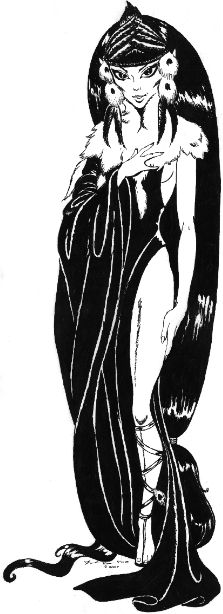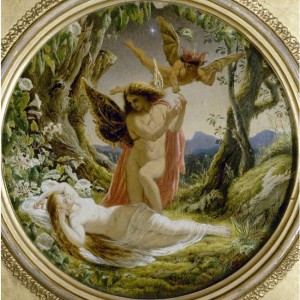 |
| Wood Elf? |
Elves are particularly interesting because of what they are not. What the word means to a person probably reflects that person's reading or movie-watching more than any other race. While AD&D's dwarves, half-orcs, and hobbits/halflings are inextricably linked to Tolkien's versions, the elf as described in first edition retains its own identity to a much greater extent.
 |
| High Elf? Art: Wendy Pini |
Over time they changed, but from the start Gygax demonstrated a knowledge and interest in the beings found in the folklore of the British Isles, and not just English stories. The MM, MMII, and even the Fiend Folio have many examples which are straight adaptations by Gygax from English, Scots, Irish, and Welsh tales and myths into AD&D stats. Probably only Greek mythology rivals Britain for direct inspirations for AD&D monsters.
The elves fit into this "ecology" and are in fact a very poor fit for either Middle Earth or Vanaheim, while the more whimsical of Britain's "fairies" are given their own entries as brownies, pixies, sprites, booka/pookas, and so on, leaving the elves themselves as one of the main demi-human options for player characters.
Which is not to say that Gygax didn't try to ride more than one horse. Even in 1977, AD&D elves came in a wide variety of types: Grey (specifically given the alternative name of "faerie"), half-elves, wood-elves (AKA sylvan elves), aquatic elves, the default high-elves, and the rumoured drow or "black elves".
Although the tallest male elves can reach 5' 6" in height, according to the DMG, the average is 5'; not "little people" exactly but far from the imposing forms of Tolkien and many older tales of elves.
 |
| Elven Queen? |
The influence of these stories is so strong, in fact, that they manage to impinge on one of the most clear of all the lifts from Tolkien - the ranger class. Despite its unarguable origins in Tolkien, in that class the list of "giant class" opponents is really a thinly disguised list of the Unseelie Court of British folklore.
 |
| Elven Royalty? |
In the end, "seelie court" of AD&D consisted of the Booka, Brownie, Buckawn, Dryad, Dwarf, Elf, Gnomes, Grig, Killmoulis, Leprechaun, Nixie (Anglo-Saxon), Pech, Pixie, Pseudo-dragon, Selkie, Some Dragons, Sprite, Swanmay, and Sylph from the lists of intelligent creatures, although some of these races would be neutral to humans. These, plus their opposite numbers in the ranger's list plus the hags and many more non- or semi-intelligent British monsters - from cooshee to yeth hounds - constitute the "natural" associations of the AD&D elf much more than balrogs and wraiths.
 |
| Elf and Sylph? |
If elves in AD&D don't seem very elvish to the modern player used to later depictions both in film and in other game systems, it may help to consider why elves are the way they are in the game and what the source material is for that particular design and build some scenarios that emphasise those origins. There are a lot of meanings to the word, and it probably helps to know which one is being used.

I believe that Poul Anderson's depiction of elves was a big influence on Gygax. My favourite rendering is probably the Middle English Sir Orfeo, where the "faerie" are basically indistinguishable from the mortals. Good observation about the "seelie" and "unseelie", never knew that (lacking an education in Irish studies).
ReplyDeleteMythological elves were associated with shapeshifting all right although the later stories seem to have modified that to a skill with illusions. So being indistinguishable from humans fits right in there, especially in context with the stories of changeling children brought up as human by unsuspecting parents.
ReplyDeleteI know a lot of players were bemused by the idea that kobolds were on the ranger's "giant class" list but for me it was just an odd choice of name; the list itself made perfect sense.